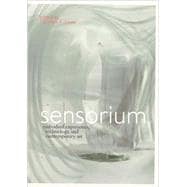
What is included with this book?
| Foreword | p. xiii |
| Introduction | p. 1 |
| The Mediated Sensorium | p. 5 |
| Curatorial Essays/Artist Statements | |
| Mathieu Briand | p. 50 |
| Janet Cardiff and George Bures Miller | p. 56 |
| Natascha Sadr Haghigian | p. 62 |
| Ryoji Ikeda | p. 68 |
| Christian Jankowski | p. 73 |
| Bruce Nauman | p. 79 |
| Francois Roche and R&Sie(n) | p. 84 |
| Anri Sala | p. 91 |
| Sissel Tolaas | p. 98 |
| Abecedarius | |
| air | p. 104 |
| artificial | p. 108 |
| auditory | p. 112 |
| biomimetics | p. 115 |
| compoundings | p. 119 |
| control | p. 125 |
| corpus | p. 128 |
| decorporealization | p. 133 |
| ether | p. 137 |
| fragrance | p. 142 |
| godscan | p. 146 |
| hedonics | p. 149 |
| identity theft | p. 154 |
| ipod | p. 156 |
| kinaesthesia | p. 159 |
| labnotation | p. 163 |
| mediation | p. 167 |
| mental image | p. 169 |
| nanofacture | p. 171 |
| networked eyes | p. 174 |
| neurodynamics | p. 180 |
| neoexistentialism | p. 182 |
| ocularity | p. 190 |
| prosthetics | p. 194 |
| remote sensing | p. 200 |
| robotics | p. 202 |
| spectral | p. 207 |
| surveillant | p. 212 |
| synaesthesia | p. 216 |
| tethering | p. 220 |
| umami | p. 227 |
| utopian body | p. 229 |
| viral | p. 235 |
| wetware | p. 237 |
| yuck factor | p. 238 |
| zoon | p. 241 |
| Works Cited | p. 246 |
| Artist, Curator, and Author Biographies | p. 254 |
| Table of Contents provided by Publisher. All Rights Reserved. |
The New copy of this book will include any supplemental materials advertised. Please check the title of the book to determine if it should include any access cards, study guides, lab manuals, CDs, etc.
The Used, Rental and eBook copies of this book are not guaranteed to include any supplemental materials. Typically, only the book itself is included. This is true even if the title states it includes any access cards, study guides, lab manuals, CDs, etc.